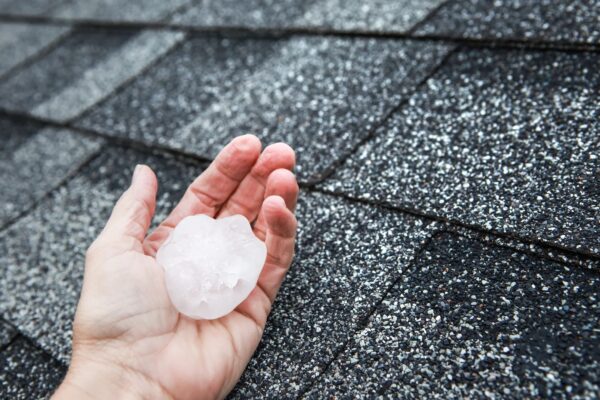 When a hailstorm hits, it can cause serious damage to your roof. Identifying hail damage early can save you money and prevent further issues like leaks or structural damage. In this guide, we’ll walk you through the signs of hail damage and what steps to take if you find any.
When a hailstorm hits, it can cause serious damage to your roof. Identifying hail damage early can save you money and prevent further issues like leaks or structural damage. In this guide, we’ll walk you through the signs of hail damage and what steps to take if you find any.
1. Check for Visible Damage
After a hailstorm, start by inspecting your roof from the ground. Look for obvious signs of damage, such as:
- Dents or Dings: Hail can leave dents in your shingles, especially in softer materials like asphalt. These dents may look like small, round spots or dimples on your roof.
- Missing Shingles: Strong hail can dislodge shingles, leaving parts of your roof exposed.
- Granule Loss: Asphalt shingles have a protective layer of granules. Hail can knock these granules loose, leaving bald spots on your shingles. You might also find granules in your gutters.
2. Inspect Your Gutters and Downspouts
Gutters and downspouts can also show signs of hail damage. Look for:
- Dents and Dings: Just like your roof, your gutters can get dented by hail. These dents may affect the flow of water, leading to drainage problems.
- Granule Buildup: If your gutters are full of granules after a hailstorm, it’s a sign that your shingles have been damaged.
3. Look for Signs of Water Damage
Hail damage can lead to leaks over time. Check for:
- Water Stains on Ceilings or Walls: If you notice water stains inside your home after a hailstorm, it could be a sign of roof damage.
- Mold or Mildew: Moisture from a leaking roof can lead to mold growth. If you spot any mold, it’s time to inspect your roof.
4. Examine the Roof’s Structure
If it’s safe to do so, and you feel comfortable, you can inspect the roof’s surface more closely. Look for:
- Cracked or Broken Shingles: Hail can cause shingles to crack or break, making them less effective at protecting your home.
- Soft Spots: If you feel any soft or spongy areas when walking on your roof, it could indicate underlying damage to the roof’s structure.
5. Call a Professional Roofer for an Inspection
While you can spot some signs of hail damage on your own, it’s always a good idea to have a professional roofer inspect your roof. They have the experience and tools to identify damage that might not be visible to the untrained eye. Plus, if you need to file an insurance claim, a professional inspection report can help support your case.
6. Document the Damage
If you find any damage, take photos and notes. This documentation will be helpful when you contact your insurance company or a roofing professional.
Conclusion
Hail damage can be subtle but harmful to your roof’s integrity. By knowing what to look for and acting quickly, you can prevent more extensive damage and protect your home. If you suspect hail damage, don’t hesitate to reach out to a trusted local roofing company for a thorough inspection and repair.
Your roof is one of the most important parts of your home—make sure it’s well taken care of!




